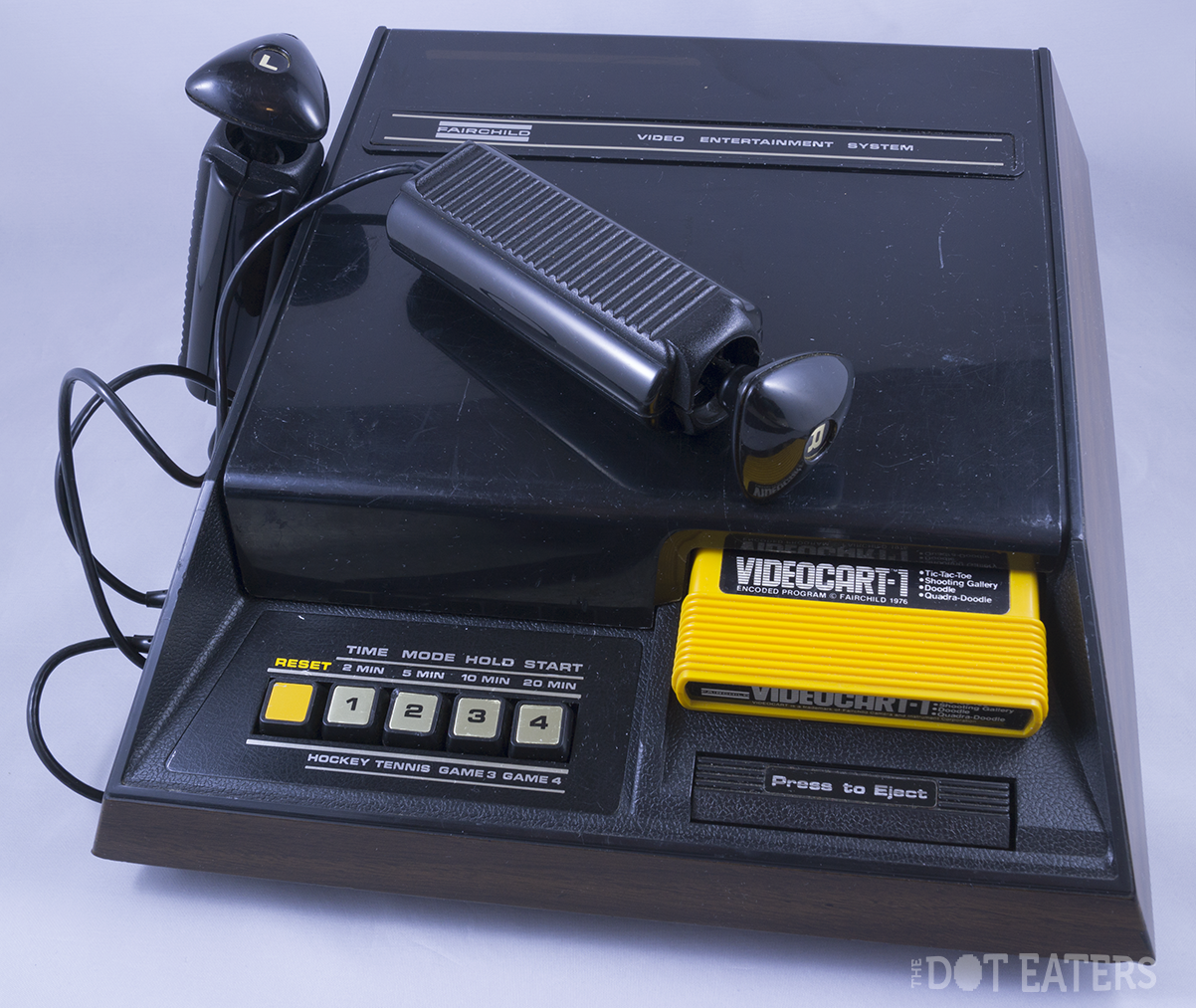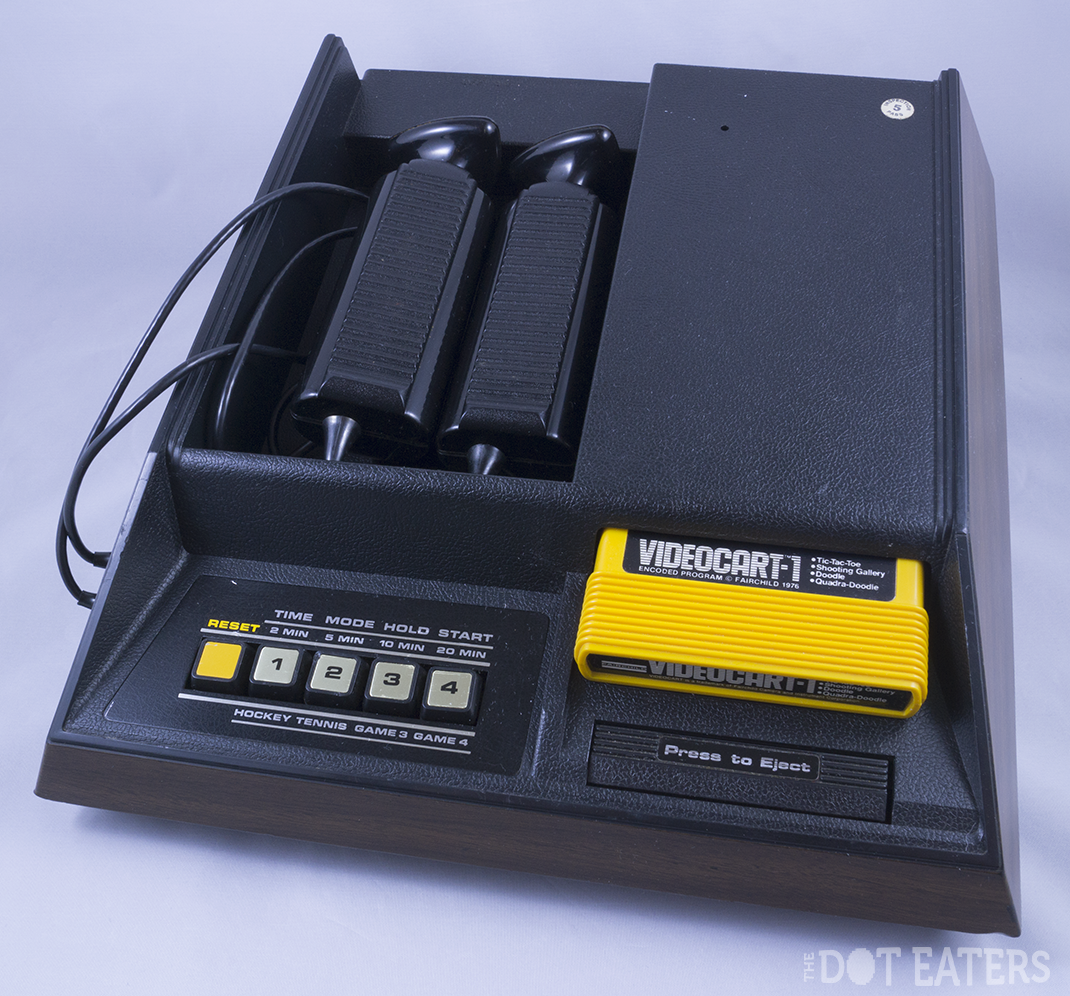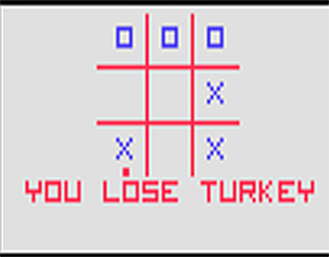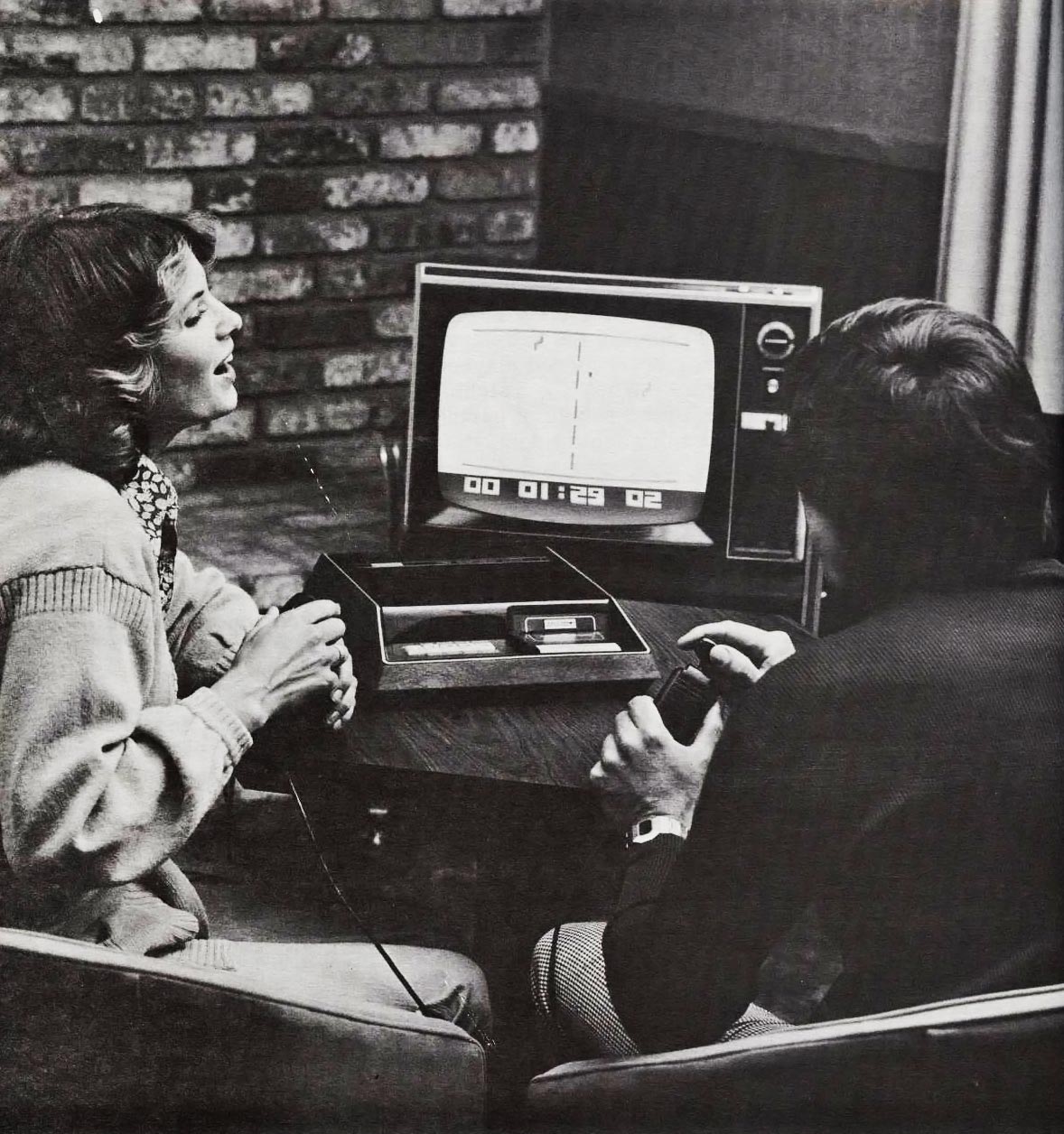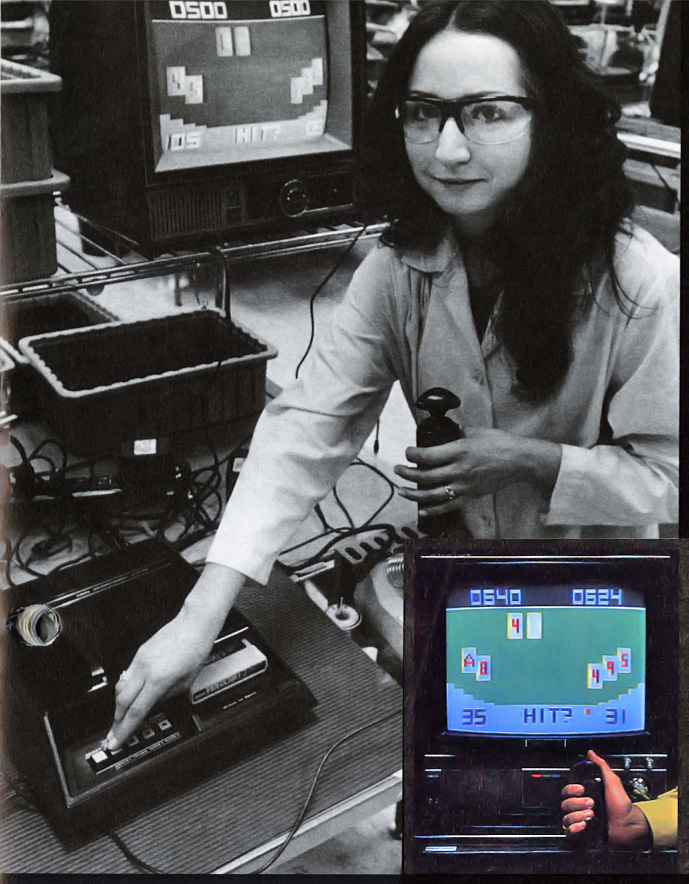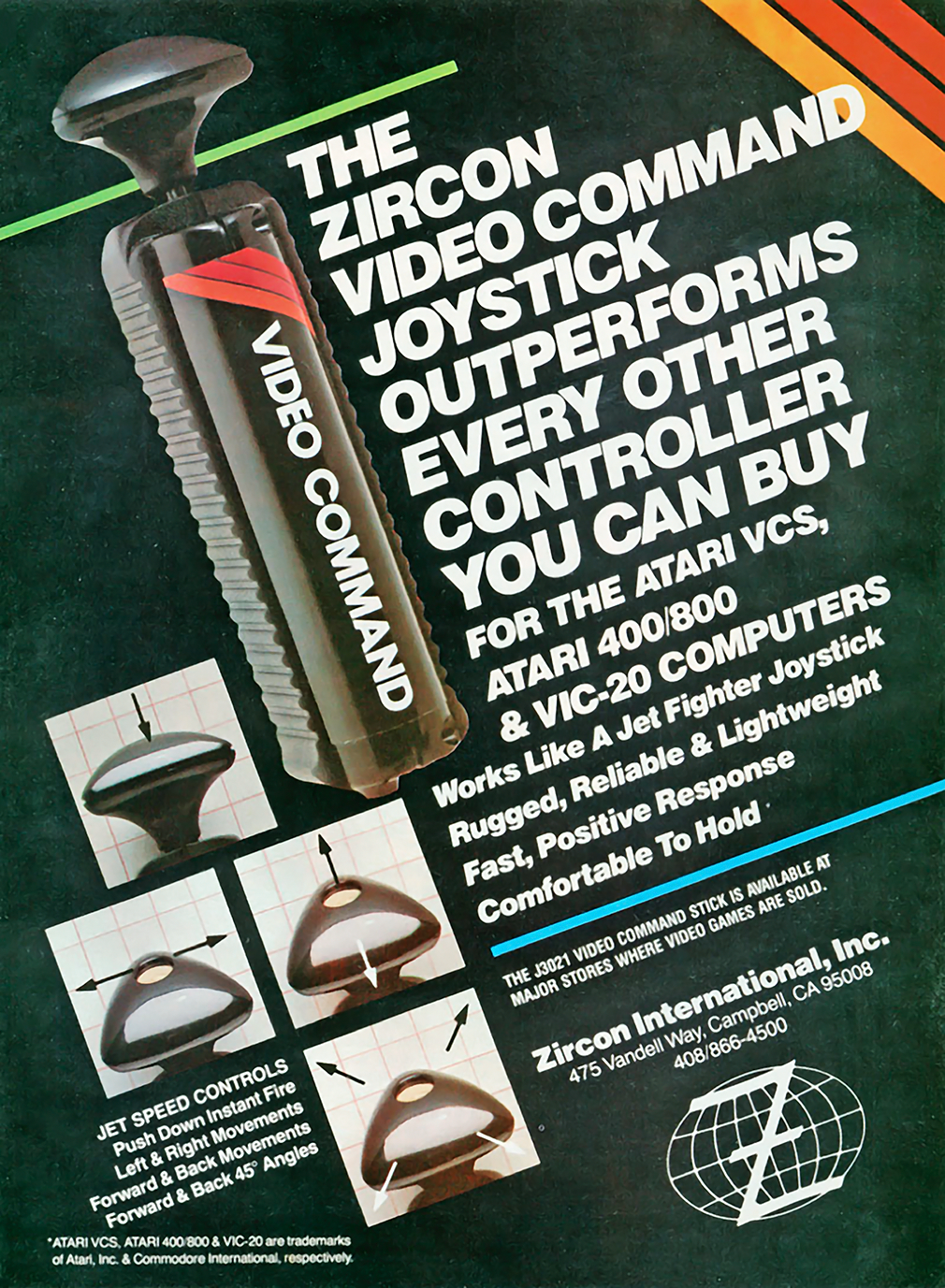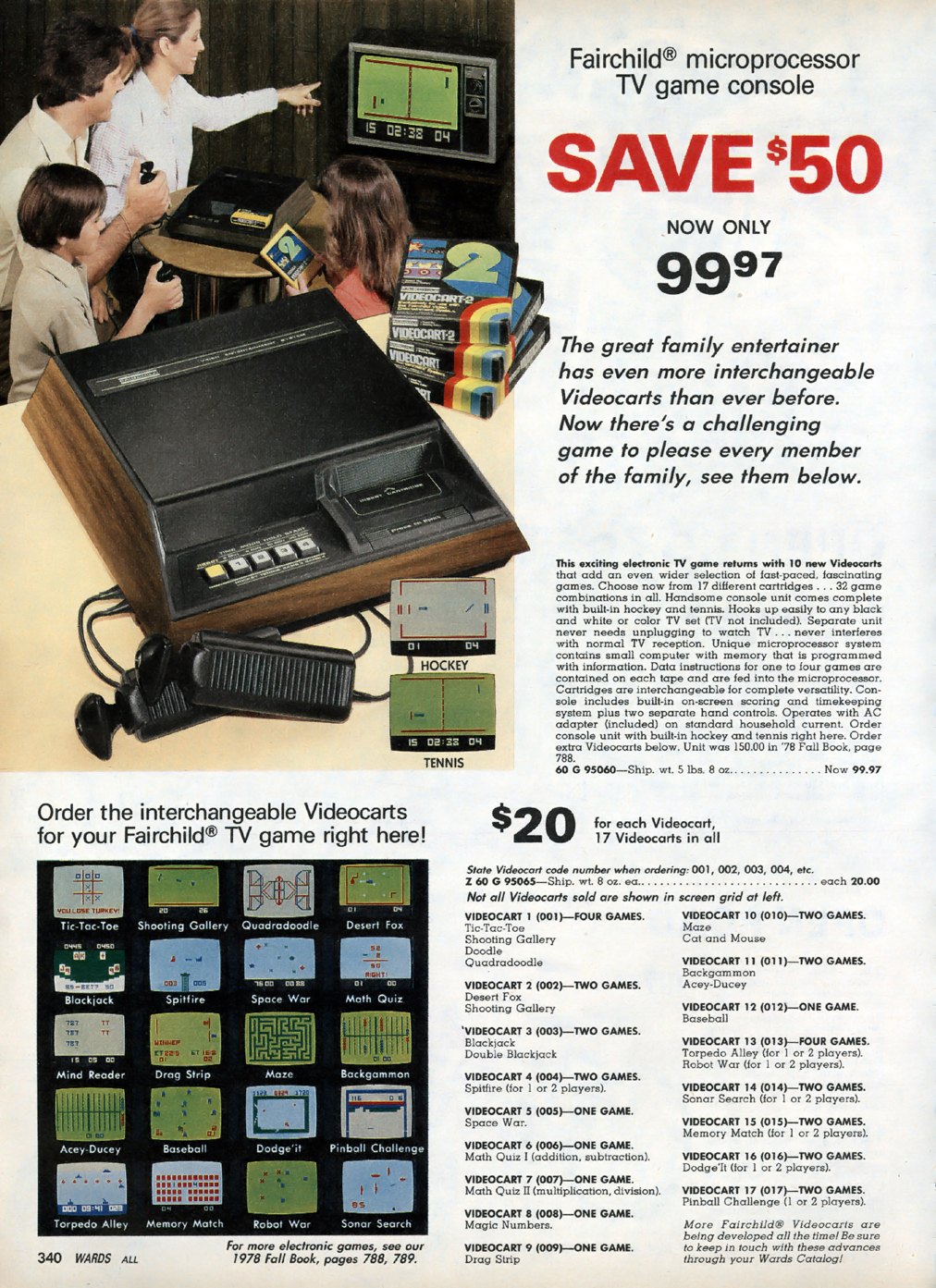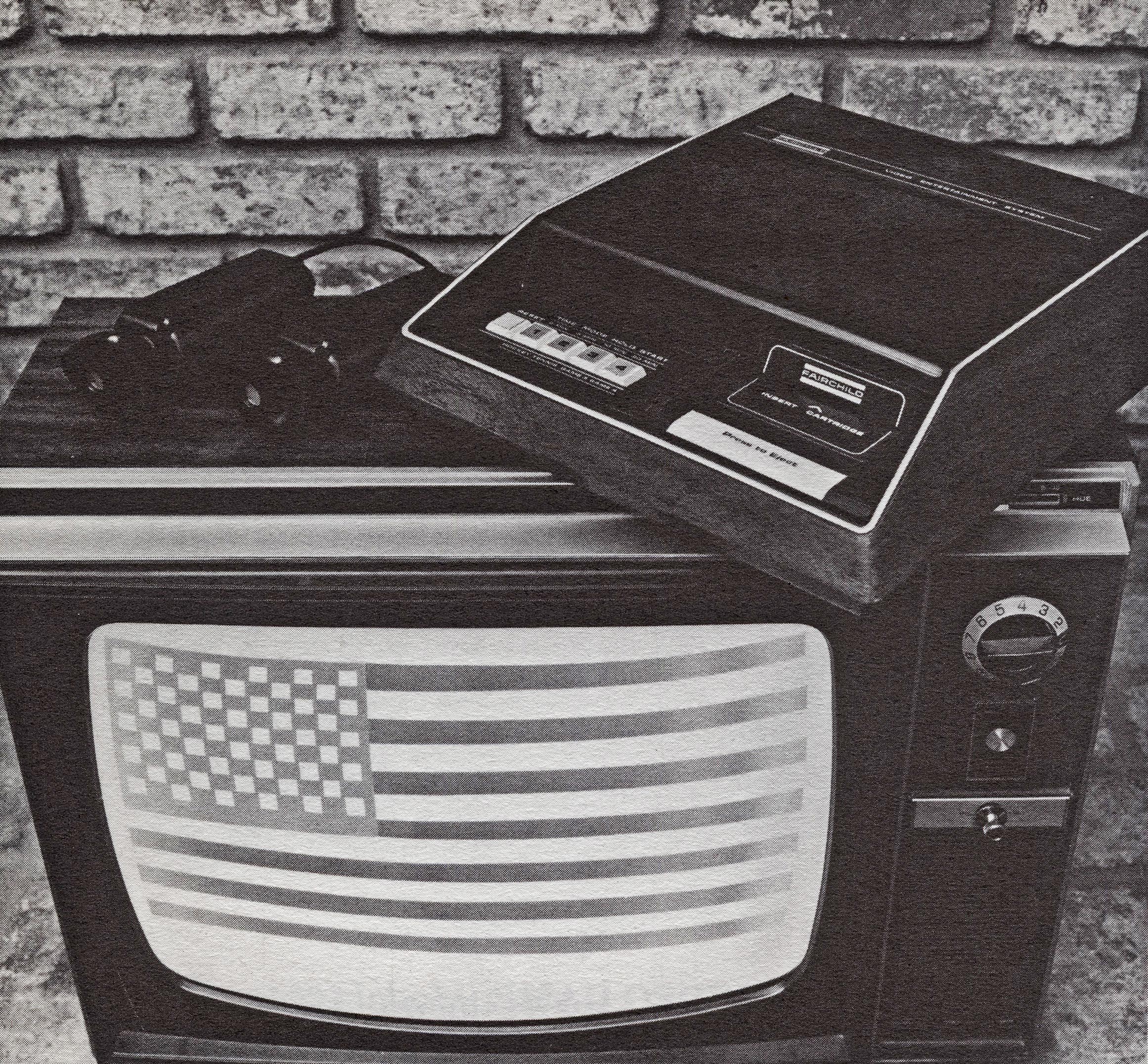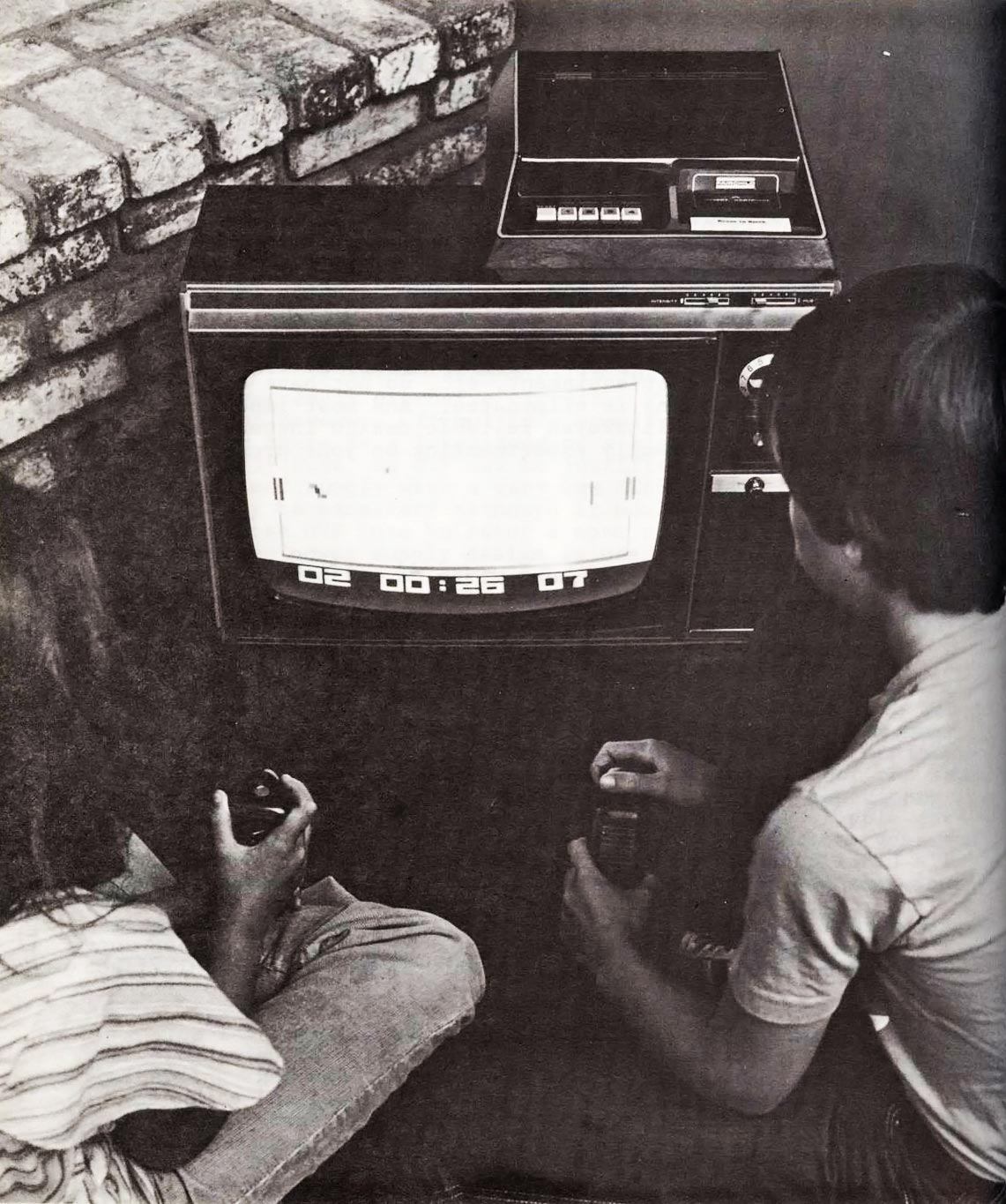Turning On Channel F
The first fully programmable video game system is the 8-bit Fairchild Channel F, made by the Exetron Consumer Products division of Fairchild Camera and Instrument. The system is introduced as a prototype at the Chicago CES on June 14, 1976, and receives a rousing reception from show attendees. It is released in limited shipments in August of that year, retailing for around $170. It is originally known as the Video Entertainment System (VES).

Jerry Lawson holds a version of his creation, the Channel F video game system, first to use cartridges, 2006 photo
The lead designer is chief engineer Jerry Lawson, a self-taught electronics whiz originally from Queens, NY. Aside from his mark left on video games, Lawson also has the distinction of having refused Steve Wozniak for an engineering position when the later co-founder of Apple sought employment at Fairchild. Lawson’s first experience with video games was creating a coin-op machine called Demolition Derby in his garage on the side while working for Fairchild in 1972 – 1973. His design utilized the first small-set microchip, the F8, invented at Fairchild by Robert Noyce. When his bosses catch wind of his game project he is issued a challenge to merge the F8 with a home video game system.
Channel F Cartridges: A Library of Fun
The “programmable” part of Lawson’s design means that the user is not limited by hard-wired built-in games, but can actually choose from a library of ROM cartridges that can be inserted into the machine to load or “program” another game. The technology to use ROM chips to hold game information in cartridges is first developed in 1974 by two engineers, Wallace Kirschner and Lawrence Haskel, working at a company out of Connecticut called Alpex Computer Corporation, who licence the tech to Fairchild. As a holder of some key patents pertaining to cartridges and video game bitmapping display techniques, Alpex later reaps rewards from agreements with pretty much every subsequent company making video game cartridges. This includes a $400,000 licensing fee from Atari in August of 1983, a $100,000 settlement from Magnavox, as well as sending letters to Mattel, Activision, Imagic, Datasoft and 71 other companies. Alpex eventually files for Chapter 11 protection in October of 1983. The Channel F cartridges facilitated by this technology are large, yellow boxes called Videocarts, the first such cartridge titled Videocart-1, holding four games: Tic-Tac-Toe, Shooting Gallery, Doodle, and Quadra-Doodle. The PONG-like Hockey and Tennis are also available as games built into the console. Each Videocart sells for $19.95.
The Channel F comes with an unusual pair of controllers, hardwired right into the system. Holding one like a stick, players twiddle a control knob on the top that not only features compass direction movement, but can also be pushed down for use as a fire button, as well as twisted left and right AND be pulled up. Near the front of the console is a control panel featuring an array of buttons. With these you can choose which of the built-in games to play, and set the time the game will last. Also offered is a “Hold” button to pause the on-screen action.
Changing the Channel F
While the pioneering use of cartridges makes the Channel F cutting-edge in 1976, it is quickly eclipsed by the wildly popular Atari VCS console, released the next year. About 400,000 Channel F units are sold over three years. As the 70’s come to a close, the fad in LED and LCD digital watches fades, and since Fairchild sells an extensive line of these watches, their consumer division takes a major hit. It is at this point that programmer Rick Maurer takes his leave of the company, having developed Pro Football, Hangman and Pinball Challenge for the Channel F. He would take his game design experience to Atari, where he would make a few waves designing a little cartridge over there for the VCS called Space Invaders.

Fairchild recommends you give Dad the gift of potentially unlimited games with the Channel F in 1977
In 1978 Fairchild reconfigures the Channel F, removing the smoked plastic cover and controller storage slots, adding detachable controllers and holding clips for them on the rear of the device, and renames the console the Channel F System II… although in all other respects the system remains the same as the original. Fairchild launches this ‘new’ TV gaming system with an ad campaign featuring Mr. Television himself: Milton Berle, known to millions in the formative years of live TV comedy as Uncle Miltie. The next year Fairchild sells its consumer electronics division to oil field services company Shumberger, who promptly sell the Channel F division to Zircon International of Campbell, CA., themselves makers of digital watches. Zircon rereleases the console in 1980 at a price tag of $99.95. In a nice gesture to owners of the original console, the price is only $69.95 if trading up from the first Channel F. The System II also sees release in the UK as the Grandstand, by a company called Adman. Zircon produces five more cartridges before the system drops off the market permanently in 1983, brining the total library for the Channel F to 25. This count doesn’t quite live up to the potentially unlimited catalog of games that programmable technology had promised.
In 1983, Zircon markets the distinctive controllers separately from the console, as the Video Command joystick, useable with the Atari VCS, Commodore VIC-20 computer and other compatibles. Several variants featuring modifications to the design such as red rapid fire buttons and a round chrome ball at the top are also released.
Channel F designer Gerald A. Lawson passes away on April 9, 2011, due to complications from diabetes, at the age of 70. The rest of the video game industry continues to build on the concepts he pioneered at Fairchild. ![]()
Sources (Click to view)
Turning On Channel F
Jerry Lawson, Channel F Designer
Image of a younger Jerry Lawson from Wikimedia Commons – http://commons.wikimedia.org/wiki/File:Jerry_Lawson_Software_Engineer.jpg
McLellan, D. (2011, April 23). Obituaries: Engineer’s innovation changed video games. Los Angeles Times, p. AA5. Retrieved October 16, 2022. Image of Jerry Lawson holding Channel F System II box, photo by David Erhart
Fairchild Channel F Faq Version 2, by Clinton R. Dyer & Chris Webb – www.digitpress.com/faq/channelf.htm
Electronic Games, “A Decade of Programmable Videogames”, pgs. 20-23, 34, March 1982. Retrieved from the Internet Archive, Electronic Games magazine collection
Triangle Plus Zero Divided By Nine – balduin.wordpress.com/2007/10/
A Library of Fun
The Revolutionary Cartridge System of the Channel F
“Tiny Video Firm Takes on Giants of the Industry.” The Billings Gazette (AP News Wire) 30 Dec. 1983: 5-B. Newspapers.com. Web. 19 June 2021. Alpex Computer Corp…has won a $400,000 settlement from Atari for licensing rights, the company and Atari say. ;In October, Alpex filed for reorganization under Chapter 11 of the U.S. Bankruptcy Code. ;Alpex says a licensing agreement and $100,000 awards also were won from Magnavox, a subsidiary of North American Philips Corp. ;The company won its settlement from Atari in August, and recently sent letters to 74 other companies. ;The patents stem from work done by two engineers, Wallace Kirschner and Lawrence Haskel, during the 1970s. ;Alpex developed Channel F along with Fairchild Semiconductor, which later dropped the game.
Leagle, “Alpex Computer Corp. v. Nintendo Co., Ltd.”, United States District Court, S.D. New York.
July 18, 1991
“Nintendo Found Guilty in Patent Case”, by Jonathan Weber, Los Angeles Times, June 07 1994
“Nintendo Escapes $254-Million Jury Verdict”, Los Angeles Times (Bloomberg News), June 24 1997
Games, Guns and Glory: The Birth of Home Video Games – newton.physics.arizona.edu/~hart/vgh/main.html
All Game Guide – Channel F – www.allgame.com/platform.php?id=45
Classified ad for the Channel F/Fairchild Video Entertainment System from Byte, pg. 196, Oct 1977
Changing the Channel
Channel F Division Sold Off
Fairchild Annual Report to Employees 1976 –
corphist.computerhistory.org/corphist/documents/doc-45cb86ebb0eb6.pdf?PHPSESSID=ccd241…
Saunders, Glenn. “Stella at 20, Pts. 1 & 2” Glenn Saunders, 1997. Accessed 1998. Rick Maurer describing his video game creation work prior to joining Atari.
Videogaming Illustrated, “Eye On: ABC’s”, pg. 10, Oct 1982. “Never mind the 400,000 people who had purchased units: Fairchild Electronics had no desire to go head-to-head against Atari…” Retrieved from the Internet Archive, Videogaming Illustrated collection, Sep 14, 2015.
Creative Computing, “Et Ceterea: Heath, Fairchild and Bally”, pg. 6, Oct 1979. “Fairchild, apparently because of mounting losses in the wristwatch division, has pulled back sharply from consumer products and is no longer marketing Channel F or cartridges for it.” “Schlumberger, a large French industrial holding company… made a cash tender offer for Fairchild” Retrieved from the Internet Archive, Creative Computing collection, Sep 29 2015.
Electronic Games, “Player’s Guide to Programmable Videogames: Zircon Revives the Channel F” by the staff of Electronic Games, pg. 43, Winter 1981
Atari2600.com Classic Gold Video Game Museum – atari2600.com/museum/GamMuseum.html
2600 Connection, “Atari VCS/2600 Controllers” – www.2600connection.com/faq/controllers/faq_controllers.html
The New York Times, “Gerald A. Lawson, a Pioneer in Video Games, Dies at 70” by Bruce Weber, pg. A24, April 14 2011
Image of the Zircon Video Command joystick from Atari2600.com Online Store
Montgomery Ward 1978 Christmas catalog page from Wishbook Flickr photo stream
Buckwalter, Len. “11 – Consumer’s Guide to Video Games.” Comp. The History of How We Play. Video Games. New York: Grosset & Dunlap, 1977. 64. Internet Archive. Web. 24 Sept. 2019. Image of Channel F on TV with American flag displayed.
External Links (Click to view)









